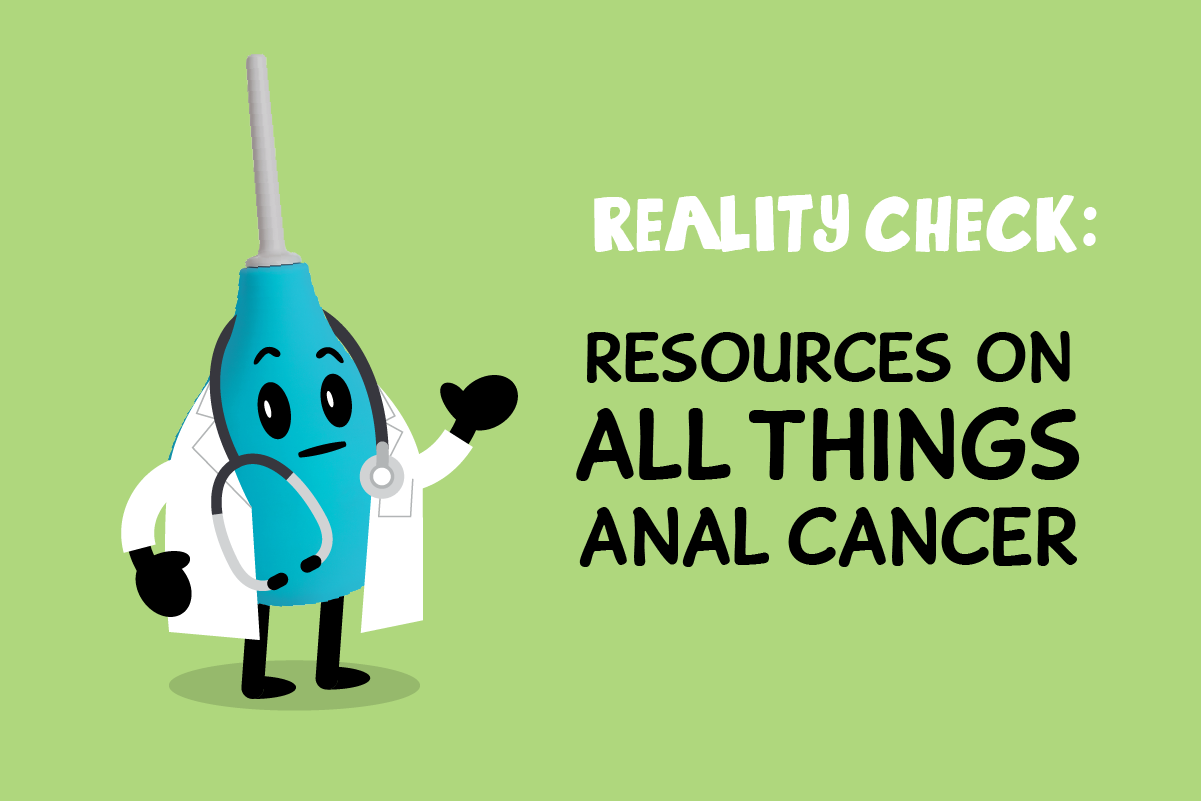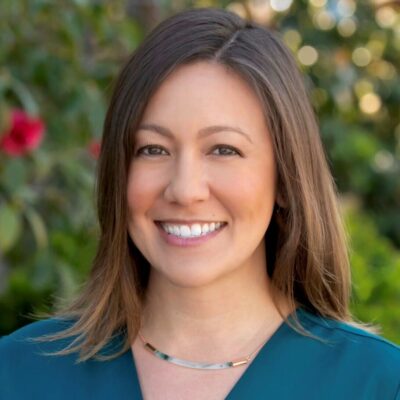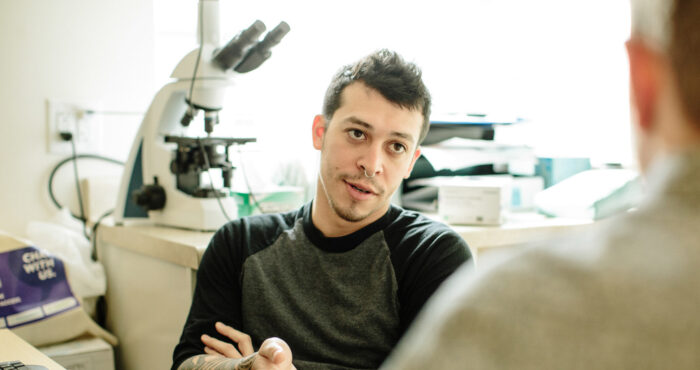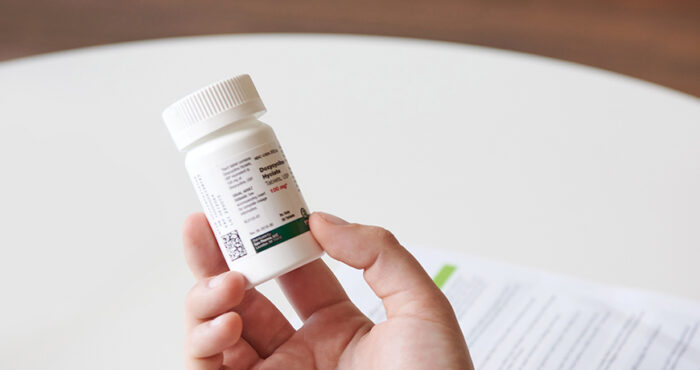A reality check (and resources!) on all things anal cancer

If it’s a bump, or some bleeding, it might be a hemorrhoid or a fissure from a particularly rough night. But pain and bleeding can also be a symptom of anal cancer—a much less common condition (but one that people may worry about more).
Before you jump to the conclusion that a bump on your butt is anal cancer, get a reality check from Joel Palefsky, MD, and J. Michael Berry-Lawhorn, MD, who are both anal dysplasia specialists. They have info about who’s at higher risk for anal cancer, what it’s caused by, and how you can take smart steps to get care if you suspect something is wrong.
What causes anal cancer?
Anal cancer is caused by the sexually transmitted infection human papillomavirus (HPV). Most sexually active people get HPV in their lifetime: It’s the most common STI in the U.S. (An estimated 79 million Americans are infected.)
Although HPV can be benign and not cause any health problems, in some cases, HPV can cause genital warts or lead to cancers of the cervix, vulva, vagina, penis, anus, or back of the throat. There are many different “strains” or types of HPV—some of those strains cause anal and genital warts, and some cause anal and cervical cancer.
Many people with HPV don’t know they have it and never develop any symptoms or issues. A subset of people who get HPV develop low-grade lesions (which are unlikely to progress to cancer) or high-grade lesions (which carry a small risk of turning into cancer). A subset of people who have these high-grade lesions may develop anal cancer, but this can take time, “sometimes decades,” said Palefsky.
Nearly all, “maybe 99%” of anal cancer is caused by HPV infection, said Berry-Lawhorn. “People that don’t have HPV infection don’t get these lesions.”
How common is anal cancer?
Over the last 10 years, the rate of new anal cancer cases has been rising on average 2.2% each year. Currently, the overall incidence rate of anal cancer is 1.8 per 100,000 in the U.S.
There are some groups of people with higher anal cancer risk, said Palefsky. Men who have sex with men (regardless of their HIV status), women who have had a history of high-grade cervical or vulvar lesions or cancer, and anyone who is immunocompromised—whether that is because of HIV or for another reason—is also at higher risk. Age is also a factor, said Berry-Lawhorn, with the risk of anal cancer going up as people get older.
For people living with HIV, incidence rates per 100,000 person-years are:
- 131 for men who have sex with men
- 46 for heterosexual men
- 30 for women
The incidence rate per 100,000 person-years for HIV-negative people is about 2, which means that people living with HIV have substantially higher risk of developing anal cancer.
How can a person tell the difference between anal cancer and something like hemorrhoids?
“Hemorrhoids are extremely common and definitely more common than anal cancer,” said Berry-Lawhorn. “If you have pain, bleeding, something sticking out, you might go to your doctor and have hemorrhoid cream or suppositories prescribed. I would say, if your symptoms go away and feel better in a few days or a week or so, you’re fine. But, if symptoms persist for a significant amount of time, that could be a sign of anal cancer.
I’ve seen patients who report being treated for hemorrhoids for a year or more, but never examined by their health care provider … the “hemorrhoid” turned out to be anal cancer. It is possible to feel the difference when a digital anorectal exam [an exam where the clinician checks the anus with a finger] is performed.”
How do you screen for anal cancer?
Women and other people that have a uterus get checked for cancers and pre-cancer in the cervix with a procedure called a pap smear on a regular basis. They aren’t called “anal pap smears,” but there is a similar screening procedure for anal cancer, said Palefsky.
Called anal cytology, this procedure involves taking and analyzing samples of cells from the anal canal to look for pre-cancerous anal lesions. “Although this test doesn’t require much special training and set-up to do, but the follow-up to this test does. So we actually don’t recommend that people get anal cytology if they aren’t going to be able to see a specialist who is able to handle an abnormal result,” said Palefsky.
Colonoscopies are not a good way to find anal disease, said Berry-Lawhorn. “If you’ve had a colonoscopy recently, and everything was normal, that doesn’t mean you don’t have pre-cancerous or cancerous anal lesions.”
Advocate for a DARE every year
Palefsky and Berry-Lawhorn recommend that people receive a digital anorectal exam (DARE) every year. A DARE involves a health care provider feeling for the presence of cancerous lesions with their fingers.
“Instead of advocating for anal cytology, we recommend that people advocate for DARE,” said Palefsky.
They recommend that the following people advocate for a yearly DARE:
- People over age 25 living with HIV (all genders)
- Men who have sex with men (regardless of HIV status)
- Women and other people with a history of high-grade cervical or vulvar lesions or cancer
- Anyone who is immunocompromised
To request a DARE, talk to your health care provider about your concerns. You can say things like: “I read that I may be at higher risk of developing anal cancer and I’d like to get checked on a regular basis for abnormal growths,” or, “I’d like to include anal health in my preventative health care plan, which is why I’d like to receive a digital anorectal exam,” or, “I’ve noticed pain/irritation/bleeding from my butt and want to make sure it’s not something more serious than hemorrhoids. Would you be able to perform a DARE or refer me to a provider who is able to?”
Get vaccinated!
There is a vaccine for HPV for people who are younger than age 26 (insurance companies only pay for the vaccine for people between the ages of 9 and 26 because people older than 26 have likely already been exposed to HPV).
If you’re older than 26, you may still be able to get vaccinated if you think there may be a benefit for you. However, if you’ve already had more than a handful of sex partners, “it’s probably not worth the cost [which can cost a few hundred dollars] since you’ve already likely been exposed to HPV,” said Palefsky.
“The vaccine is completely safe for people living with HIV,” said Palefsky. “It’s really important for all HIV-positive people between the ages of 9 and 26 get vaccinated.”










